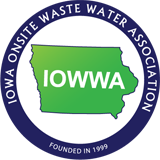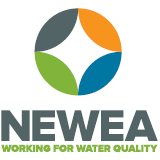|
Treatment technology for South African mine water
1/16/2015 |
|
|
Approx. 48 billion euros needed to improve water and waste-water treatment
Mines are a source of heavily polluted waste water
Flagship projects to produce drinking water quality
Water and in particular waste water are environmental themes of great importance in mining in South Africa. These vital aspects are being addressed by IFAT Environmental Technology Forum Africa, the premiere of which takes place from September 15 to 18, 2015 at the Johannesburg Expo Centre. This new sector platform brings together suppliers and users of innovative solutions and technologies for water, waste water, refuse and recycling, it is being held in a market that presents great opportunities.
High level of investment in water and waste water 670 billion Rand - around 48 billion euros - is what South Africa must invest in the next ten years in order to modernize its water and waste-water infrastructure, according to Nomvula Mokonyane, Minister of Water Affairs and Sanitation. As well as renovating the dilapidated pipe systems and building more municipal treatment plants, the country is also faced with the challenge of dealing with the heavily polluted water draining from its mines.
AMD: A poisonous cocktail seeping from disused mines Acid mine drainage, or AMD, is the main contributor of this problem. Highly acid waste water containing high levels of heavy metals is produced when water floods into disused shafts, in particular in gold mines. This poisonous cocktail can also seep from spoil heaps. If nothing is done, then AMD can severely pollute both surface and ground water. The failings of the past, such as a lack of legislation to enforce the cleaning up of mines, have led to the poisonous waste water from these mines becoming an ever more urgent environmental problem for South Africa.
Wide range of treatment technologies A range of treatment solutions for tackling these problems is supplied by international environmental technology companies. The options include, for example, ventilation, precipitation and ion-exchange processes, components for membrane and nano filtration, reverse-osmosis plants and solutions for biological sulfate removal. Added to this is the accompanying equipment of pumps, pipes and measuring devices. Just which solution is the most appropriate depends on the composition of the waste water in question, and this varies widely between the different mining regions.
Drinking water from mine water?
In the past in South Africa treatment of waste water from mines generally concentrated on neutralizing low pH values and removing metals. However this still leaves the salts in the water, and according to a South African commission of experts it is important in the medium to long term to also deal with these constituents. By doing this, it would be possible to provide a "side effect" to help alleviate the water shortage in the country: A few flagship projects are already in operation that produce drinking water quality from active coal mines, through desalination systems, and this water is then fed into the municipal networks.
According to information from the economic development agency Germany Trade & Invest (GTAI), plans are under way to use large modern desalination plants to produce drinking water from AMD in areas including Johannesburg.
The disused mine shafts could then be re-purposed to serve as an underground water reservoir that could cover an estimated five percent of the overall water demand in the region.
These are topics that present great potential for business for the both the exhibitors and participants in IFAT Environmental Technology Forum Africa. |
|
Related Exhibition:
|
|
|
|
|







